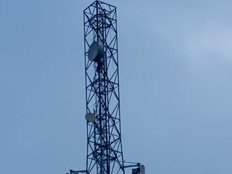DISA Sets the Stage for Its Network of the Future
The Defense Department is getting a souped-up network.
In late April, the Defense Information Systems Agency disclosed in a statement that it would upgrade the Defense Information Systems Network (DISN) optical transport system from its current 10 gigabits per second operational status to a 100Gbps transport system. DISA also plans to enhance the resiliency of the network.
The upgrade, which DISA says will be completed in fiscal year 2019 (which starts Oct. 1, 2018), comes as the Pentagon is ramping up its plans for wider use of public cloud services and as the armed forces seek to add more mobile devices to their IT environments. It also comes as DISA plans to roll out software-defined networking technology.
Thus, enhancing the speed and strength of the DISN seems like a necessary move for DISA to make. DISA notes that the changes will support “the growing demand for bandwidth on the network by increasing efficiency, reliability and capacity.”
SIGN UP: Get more news from the FedTech newsletter in your inbox every two weeks!
DISA Aims to Create a More Robust, Modern Network
DISA, which provides IT and secure communications services across the Defense Department and military service branches, says that the Next Generation Optical Transport network upgrade project will have several benefits for DOD.
The updated network will support combatant commands “with improved infrastructure resiliency, service delivery node resiliency, encryption, and transitions critical legacy components” to an IP-based Ethernet infrastructure, according to the DISA statement.
And the new fiber-optic network will provide 100Gbps bandwidth to the Joint Information Environment Enterprise Data Centers, and Joint Regional Security Stack sites. The enhanced network will include critical elements such as additional fiber paths and optical equipment for combatant commands related to intelligence, cybersecurity, missile warning, surveillance and reconnaissance, and others.
“Our goal is to provide a more robust, survivable network infrastructure that will establish multiple diverse paths,” Johnathan “Chris” Bunting, chief of the global projects branch in DISA’s infrastructure directorate, says in a statement. “This will eliminate network outages due to single-event occurrences and improve our availability to key Department of Defense applications and services.”
“This is a critical infrastructure upgrade that will benefit unified commanders and combat forces worldwide,” Bunting adds.
DISA’s announcement about the network upgrade came on the heels of the agency’s release of a draft request for proposals for its new Defense Enterprise Office Solutions cloud contract. With DEOS, DISA says it is seeking “a seamlessly integrated, enterprise [cloud service offering] as a replacement for disparate DOD legacy enterprise information technology (IT) services, such as voice, video, collaboration, email, content management, records management and office productivity.”
And, of course, DOD is moving ahead with its massive Joint Enterprise Defense Infrastructure contract. The Pentagon plans to issue the JEDI contract in September. As Washington Technology notes, JEDI is valued at $10 billion and DEOS is valued at $8 billion, and both are expected to be single-award contracts.
Agility and Mobility Are Key for DISA
The network upgrade fits with DISA’s goal of moving faster to give warfighters enhanced technology.
The agency’s most important “near-term” work is focused on delivering innovative IT solutions to soldiers and civilian DOD employees as quickly as possible, according to DISA’s chief.
All of DISA’s near-term plans “are about agility,” Vice Adm. Nancy Norton, who became director of DISA in February, said on May 15 at AFCEA’s 2018 Defensive Cyber Operations Symposium in Baltimore, according to FedScoop. “How do we adapt to changing needs for our warfighters as quickly as the requirements change from the mission partners?”
Norton noted that DISA’s mobility solutions are a key element in that strategy. Mobility is an area “where we can enable our mission partners to work from anywhere regardless of whether there’s a significant infrastructure in the area or allowing them to operate in very, very new environments and new requirements.”








